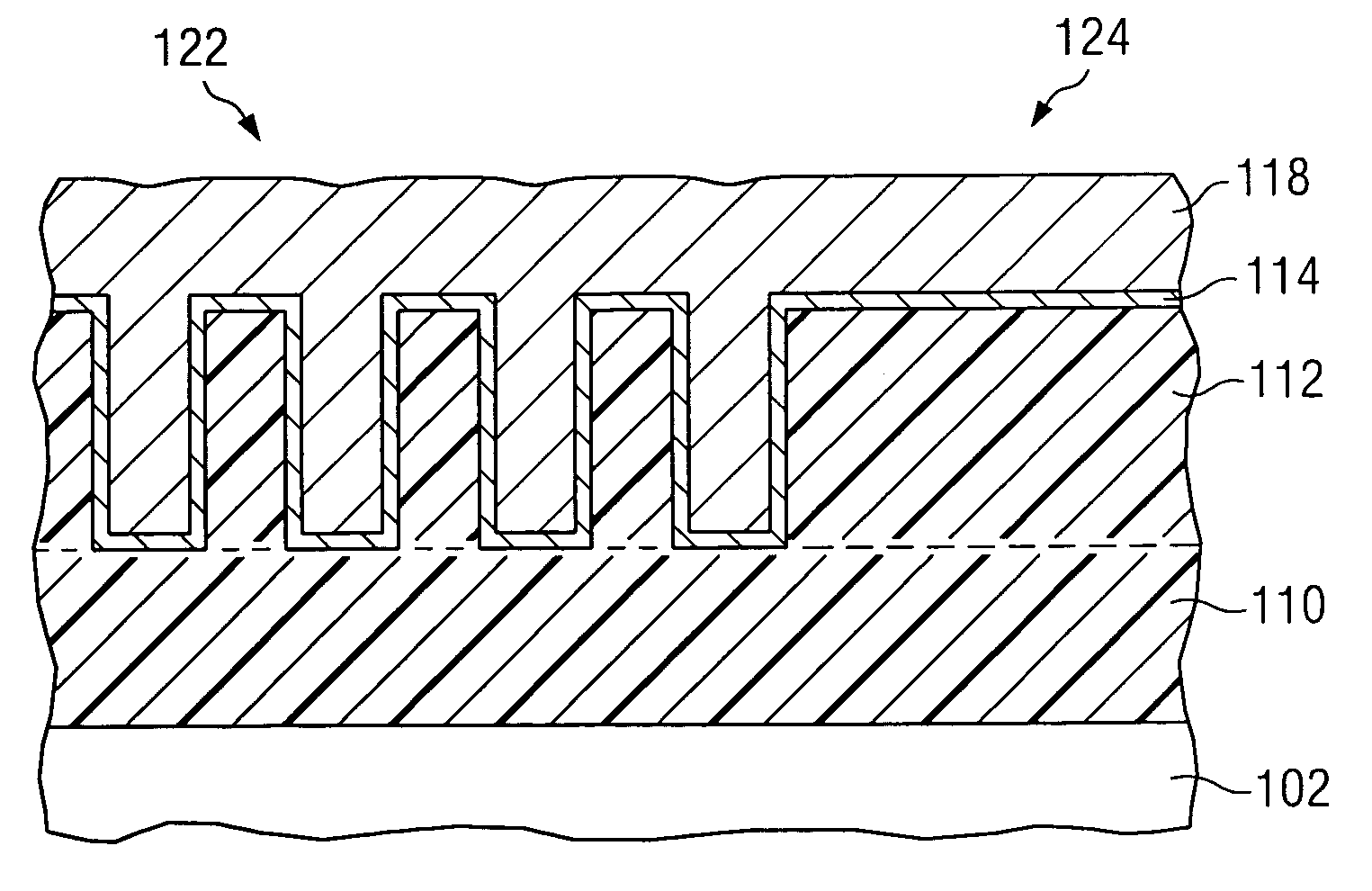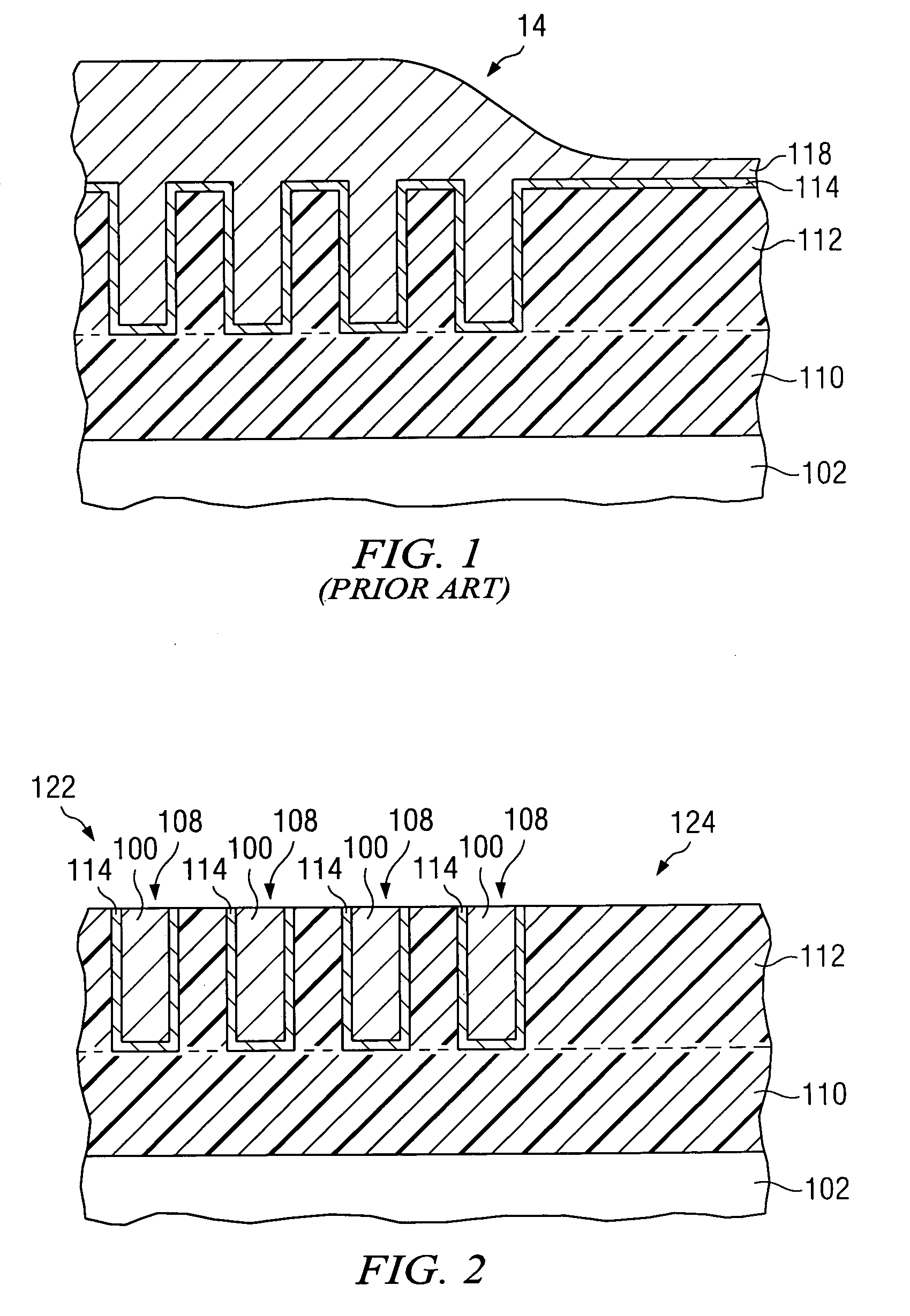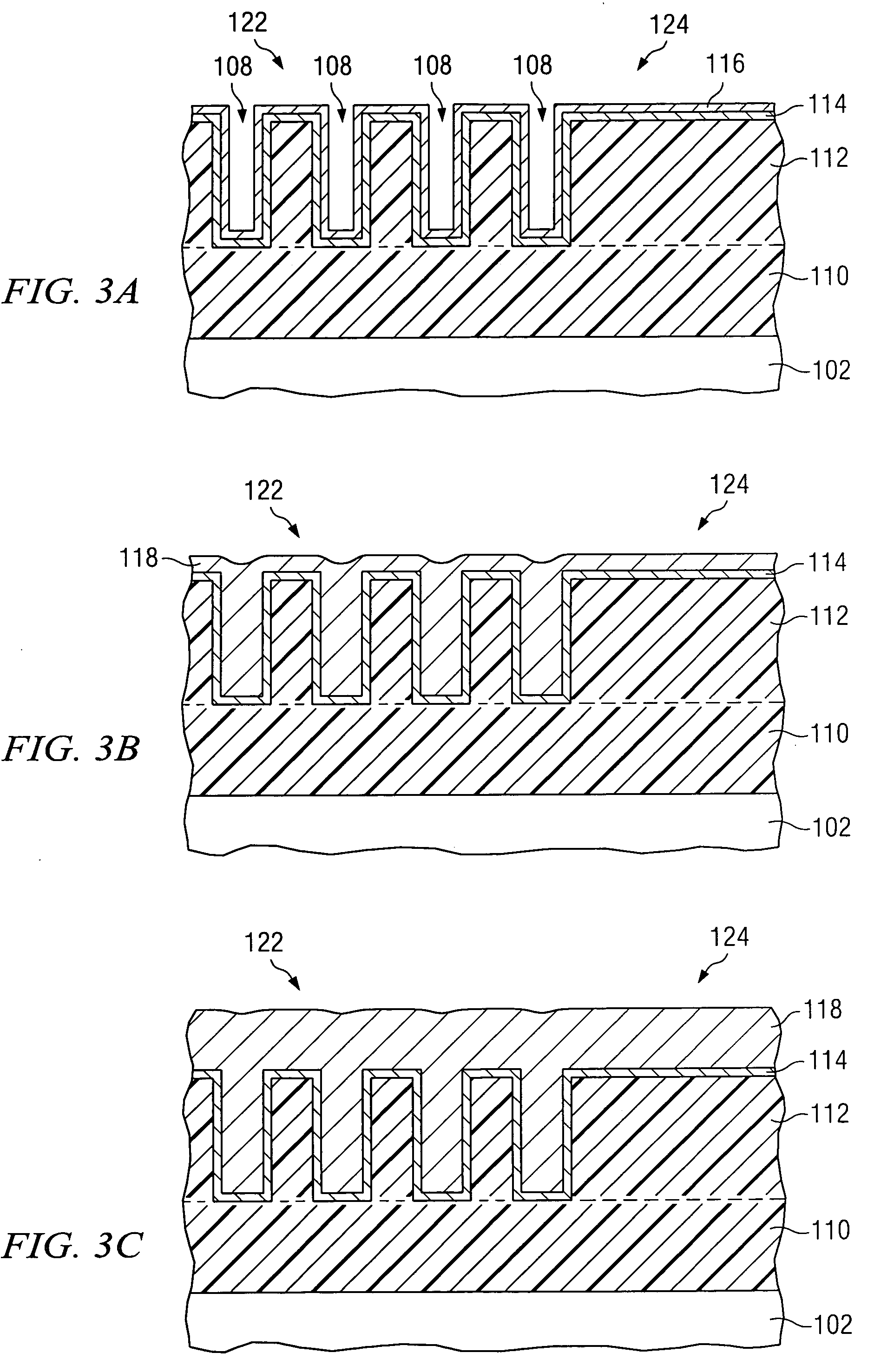Plating-rinse-plating process for fabricating copper interconnects
a copper interconnect and plating technology, applied in the field of plating-rinse-plating process for fabricating copper interconnects, can solve the problems of increasing the difficulty of a cmp process, requiring longer overpolish time for copper protrusion, and not being applicable to the sputtering process widely used for al metallization, so as to achieve better sheet resistance control and easy cmp.
- Summary
- Abstract
- Description
- Claims
- Application Information
AI Technical Summary
Benefits of technology
Problems solved by technology
Method used
Image
Examples
Embodiment Construction
[0012]The invention will now be described in conjunction with dual damascene copper interconnect process. It will be apparent to those of ordinary skill in the art having reference to the specification that the benefits of the invention may be applied to ECD copper in general where it is desired to fill dense features.
[0013]A dual damascene copper interconnect 100 formed according to the invention is shown in FIG. 2. Copper interconnect 100 is formed over semiconductor body 102. Semiconductor body 102 typically has transistors and other devices (not shown) formed therein. Semiconductor body 102 may also include one or more additional metal interconnect layers (not shown). Copper interconnect 100 comprises a lead portion formed within trenches 108. A via portion (not shown) may also be formed below trenches 108. Vias extend from the bottom of trenches 108 through interlevel dielectric (ILD) 110 to a lower metal interconnect layer. Trenches 108 are formed within intrametal dielectric ...
PUM
| Property | Measurement | Unit |
|---|---|---|
| temperature | aaaaa | aaaaa |
| pH | aaaaa | aaaaa |
| temperature | aaaaa | aaaaa |
Abstract
Description
Claims
Application Information
 Login to View More
Login to View More - R&D
- Intellectual Property
- Life Sciences
- Materials
- Tech Scout
- Unparalleled Data Quality
- Higher Quality Content
- 60% Fewer Hallucinations
Browse by: Latest US Patents, China's latest patents, Technical Efficacy Thesaurus, Application Domain, Technology Topic, Popular Technical Reports.
© 2025 PatSnap. All rights reserved.Legal|Privacy policy|Modern Slavery Act Transparency Statement|Sitemap|About US| Contact US: help@patsnap.com



